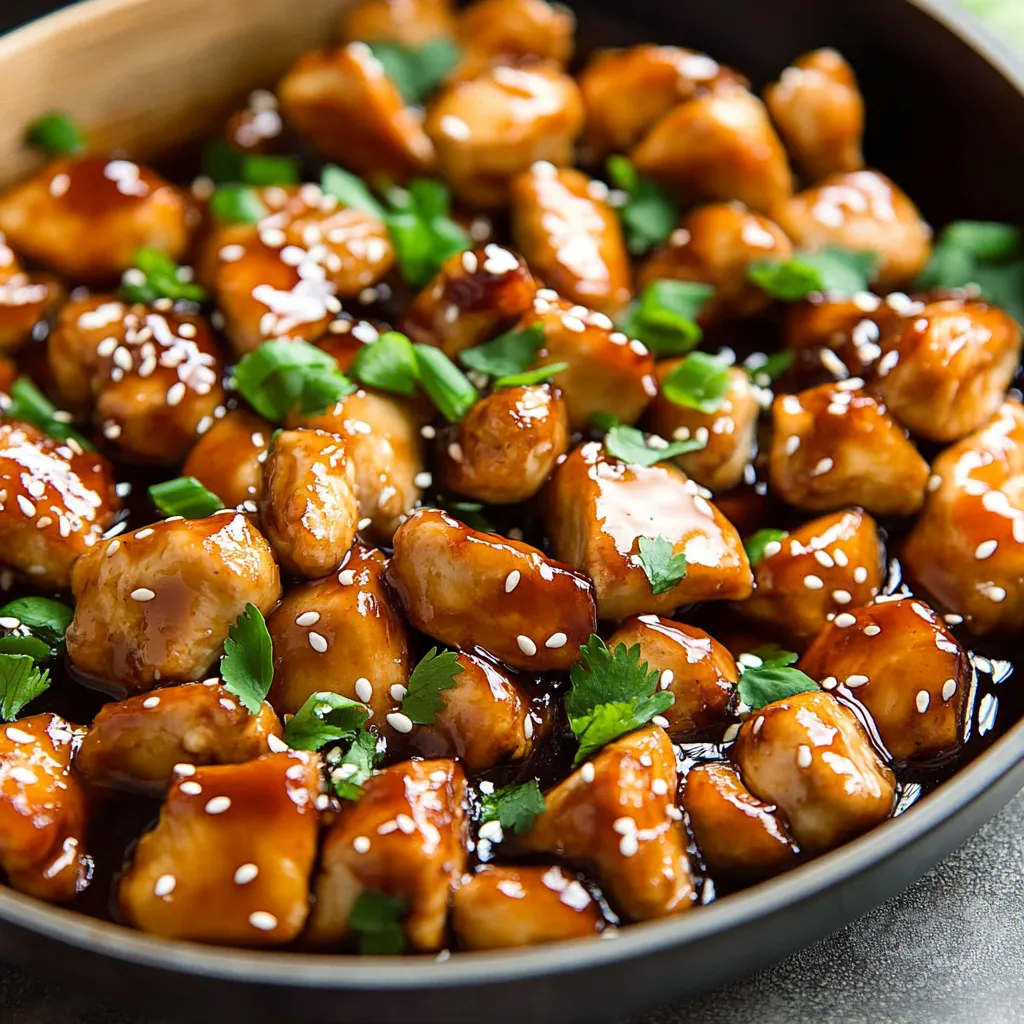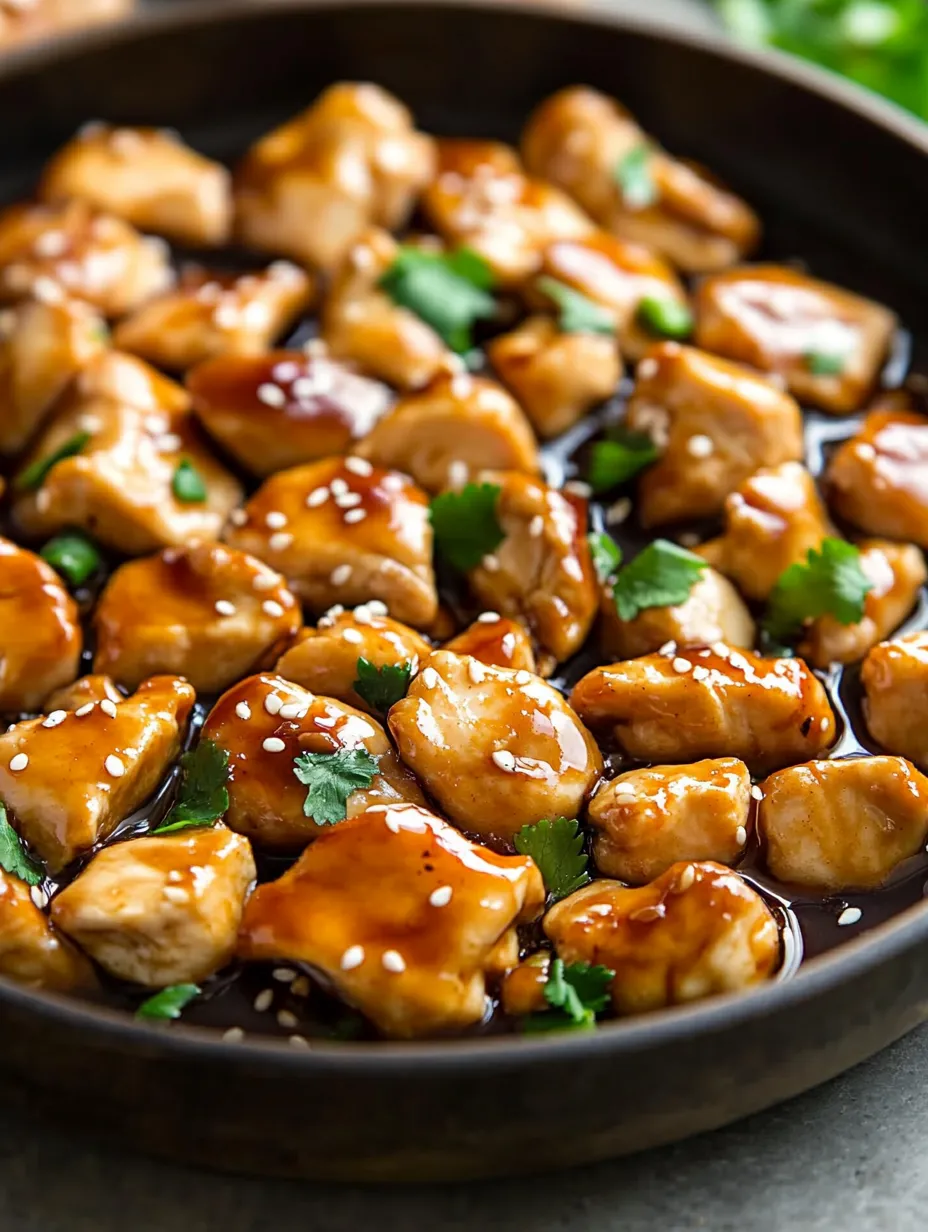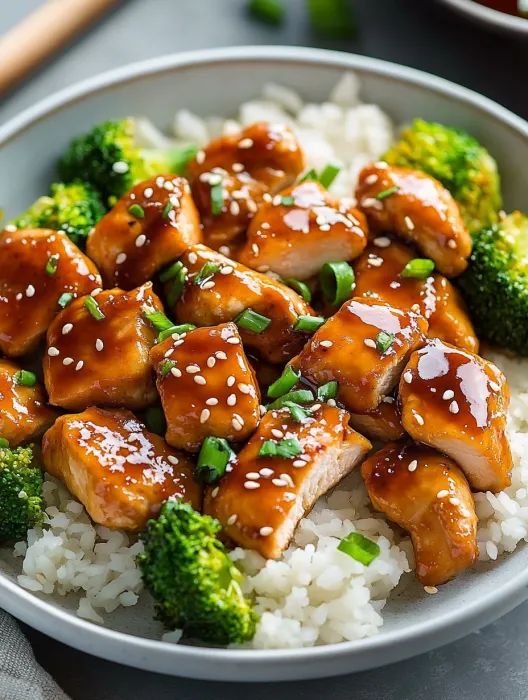 Save
Save
This teriyaki chicken recipe transforms simple chicken breasts into a restaurant-quality meal in just 15 minutes. The sweet-savory glaze coats tender chicken pieces perfectly, making it a reliable weeknight dinner that never disappoints.
I discovered this recipe during a particularly chaotic week when my family needed something quick but satisfying. The way my children's eyes lit up at first taste convinced me this needed to become part of our regular rotation.
Ingredients
- Boneless skinless chicken breasts the protein foundation that cooks quickly and evenly when cut into 1inch pieces
- Low sodium soy sauce provides the essential umami base without making the dish too salty
- Honey natural sweetener that gives the sauce its signature gloss and stickiness
- Light brown sugar adds depth to the sweetness with subtle molasses notes
- Rice vinegar balances the sweet elements with necessary acidity to create that perfect teriyaki flavor
- Toasted sesame oil just a touch creates authentic Asian flavor impossible to replicate with other oils
- Fresh ginger and garlic aromatic foundations that elevate the sauce from good to exceptional
- Cornstarch the thickening agent that transforms liquid into that perfect clinging glaze
- Optional garnishes sesame seeds and green onions provide texture contrast and visual appeal
Step-by-Step Instructions
- Heat the Pan
- Heat your olive oil in a 12inch nonstick skillet over mediumhigh heat until it shimmers slightly but does not smoke. A properly heated pan ensures the chicken will sear rather than steam.
- Brown the Chicken
- Add cubed chicken in a single layer with space between pieces to prevent overcrowding. Let chicken cook undisturbed for 3 to 4 minutes until the bottom develops a golden brown crust before flipping. This initial searing locks in moisture and creates flavor.
- Prepare Sauce While Cooking
- While chicken cooks, whisk together soy sauce, water, honey, brown sugar, rice vinegar, sesame oil, minced ginger, minced garlic, and cornstarch until completely smooth. Make sure the cornstarch fully dissolves to prevent lumps in your finished sauce.
- Create the Glaze
- Pour the sauce mixture into the skillet with the fully cooked chicken. Stir continuously as the sauce bubbles and thickens, coating each piece of chicken evenly. The transformation happens quickly, taking only 30 to 60 seconds as the cornstarch activates with heat.

The fresh ginger makes all the difference in this recipe. I once tried to substitute powdered ginger in a pinch, and while still good, it lacked that vibrant zing that makes this dish truly special. My daughter now insists on helping grate the ginger whenever we make this chicken.
Serving Suggestions
This teriyaki chicken pairs beautifully with steamed rice which soaks up the extra sauce deliciously. For a complete meal, add steamed broccoli or a simple vegetable stir fry alongside. The chicken also makes excellent meal prep when packed with rice and vegetables in containers for easy lunches throughout the week.
Make it Your Own
The beauty of this recipe lies in its adaptability. Try adding pineapple chunks for a tropical twist, or incorporate vegetables like bell peppers, snow peas, or broccoli directly into the skillet for a complete onepan meal. For spice lovers, add a sprinkle of red pepper flakes or a dollop of sriracha to the sauce.
Storage Tips
Store leftover teriyaki chicken in an airtight container in the refrigerator for up to 3 days. When reheating, add a splash of water to revitalize the sauce if it has thickened too much. This chicken also freezes well for up to 2 months simply thaw overnight in the refrigerator before gently reheating on the stovetop.
Cultural Context
Teriyaki originates from Japan, where the word refers to a cooking technique. Teri means shine or luster, while yaki means grilled or broiled referring to the glossy finish on the food. Traditional Japanese teriyaki uses mirin rather than honey, which is why the recipe notes offer that authentic substitution option for those wanting a more traditional flavor profile.

Recipe FAQs
- → Can I use chicken thighs instead of chicken breasts?
Yes, boneless skinless chicken thighs work wonderfully in this dish and often result in even juicier meat. Cut them into similar 1-inch pieces and follow the same cooking instructions, though they may need an extra minute of cooking time.
- → How can I make this teriyaki chicken spicy?
To add heat, incorporate 1-2 teaspoons of sriracha or 1/4-1/2 teaspoon of crushed red pepper flakes to the sauce mixture. You could also add a thinly sliced fresh chili pepper when sautéing the chicken.
- → What vegetables can I add to this dish?
Broccoli, bell peppers, snap peas, carrots, and mushrooms all pair beautifully with teriyaki chicken. For quick cooking, add pre-blanched or thinly sliced vegetables to the skillet after the chicken is nearly cooked through, then pour the sauce over everything.
- → Is there a substitute for cornstarch?
Arrowroot powder can be substituted in equal amounts for cornstarch. Alternatively, you could use 4 teaspoons of all-purpose flour, though the sauce won't be quite as glossy. For a no-thickener version, simply reduce the sauce longer until it naturally thickens.
- → How do I store leftover teriyaki chicken?
Cool the chicken completely, then store in an airtight container in the refrigerator for up to 3-4 days. Reheat gently in a microwave or skillet with a splash of water to prevent drying out. The dish can also be frozen for up to 2 months.
- → What's the difference between Mirin and rice vinegar?
Mirin is a sweet Japanese rice wine that adds both sweetness and acidity, while rice vinegar is just acidic. As the recipe notes suggest, substituting half the water with Mirin will create a more authentic flavor profile with additional depth and richness.
